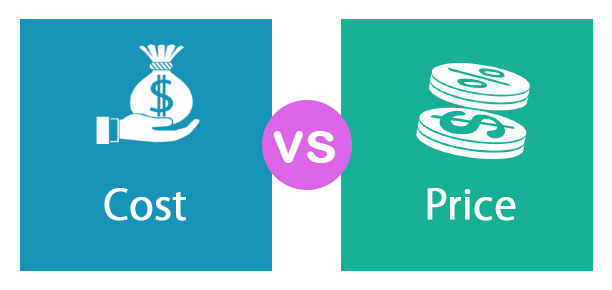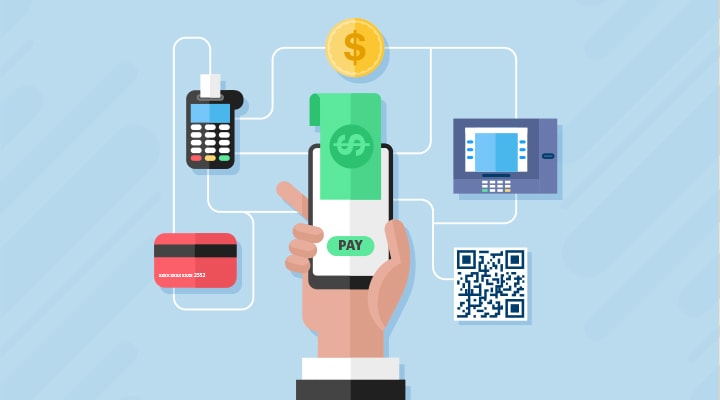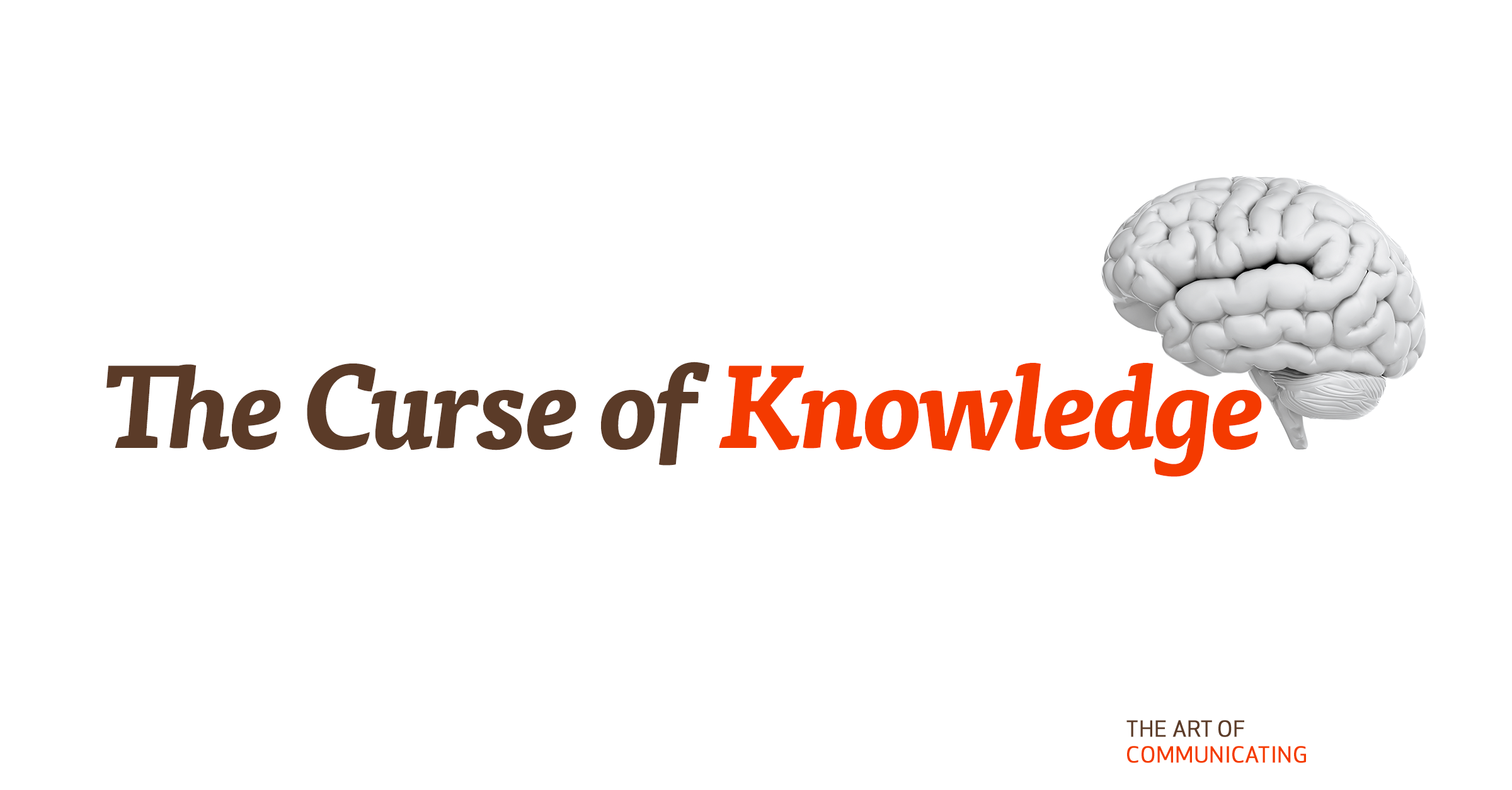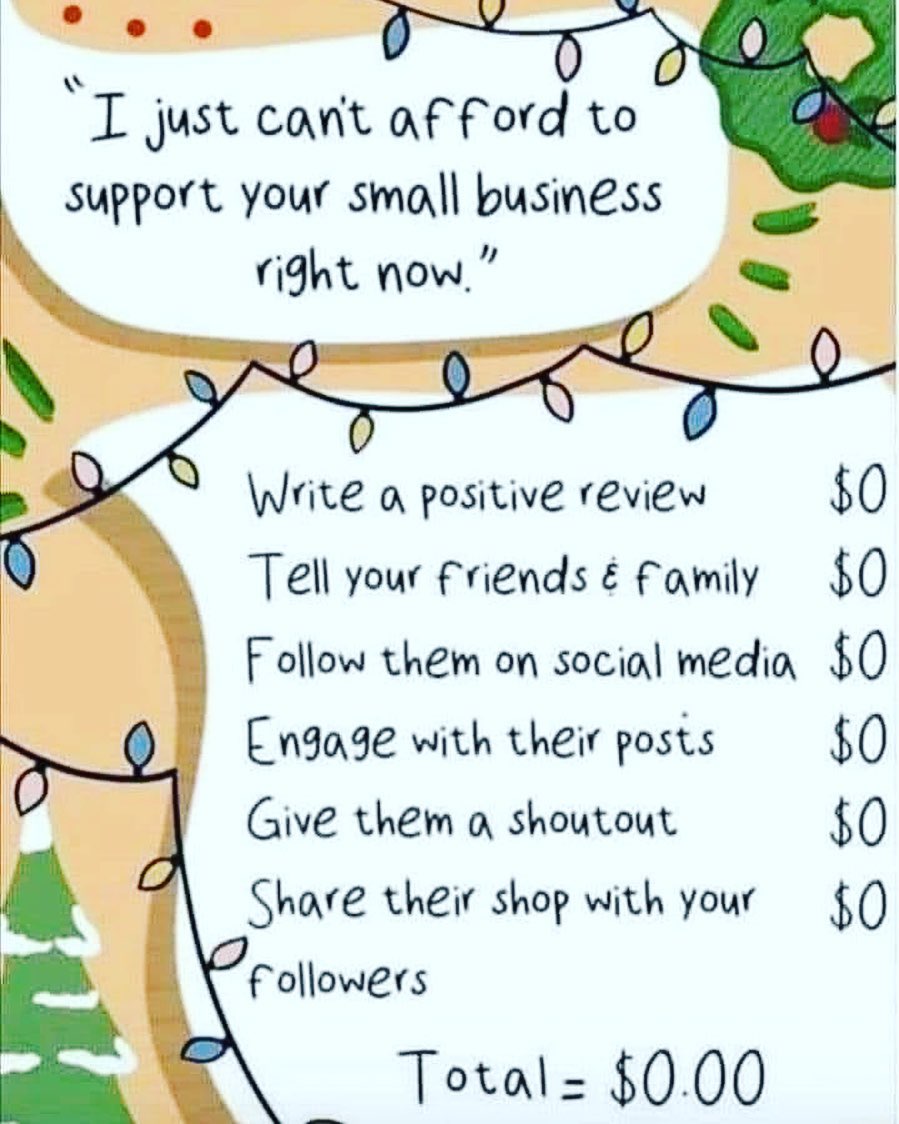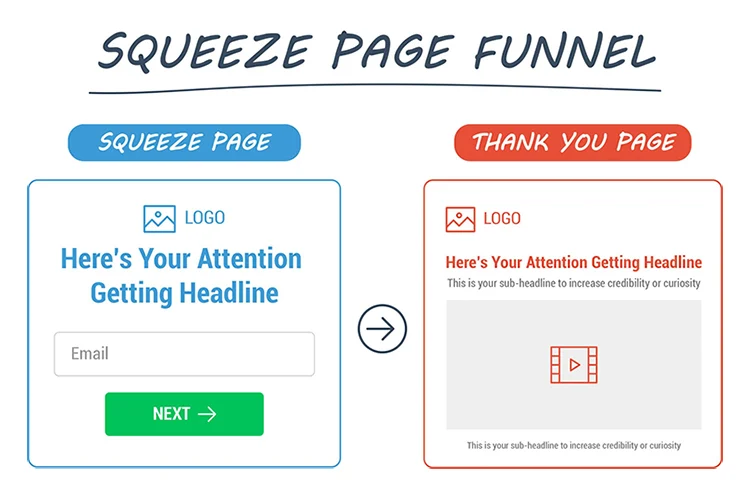“New cam. Who dis?” Reconditioned Z6 II. Happy to take paid assignments.
Marketing – general
Teaching Online – Part 5
Structure 2 – A Bigger Picture
Earlier, we looked at the structure of your lessons. I advised you to start with a single, simple lesson and grow from there. Over time, you’ll accumulate enough content to create modules, then courses, and perhaps even a whole program.
Add-on or brand new?
During these articles, I’ve tried to talk about teaching online as if you were adding it to an existing business or enterprise. However, you can offer an educational experience that has nothing to do with your primary business. You can sell car parts, and create a platform to learn car repair, or you can pivot and teach cake decorating. You could offer the car repair lessons directly from your existing website, but the cake decorating lessons will need their own structure separate from the car parts.
Is your intent to provide lessons for existing customers, to enhance what they’re already purchasing from you? Or do you want to provide a complimentary educational experience for existing and possibly new clients? Providing lessons on replacing parts enhances your business selling car parts, while a program on how to apply a custom paint job may draw in some customers already buying car parts, and will draw in others who may not be customers, but who are interested in painting their own vehicle.
One course and beyond
Once you’ve created a whole course and begun selling it, where do you go from here (assuming the course is providing a return on your investment)? As you’ll quickly learn while trying to design and populate your first lesson, running an educational platform requires time, focus, and perseverance. It can quickly become a business of its own.
So, do you add more resources to building and running an educational platform? Do you let it remain as it is? Or, when interests – yours, your customers, or both – have waned, do you pull it down and scrap it? Perhaps even sell it off down the road?
These questions aren’t an academic exercise. When you’ve built a platform, and it has any kind of success, you’ll have to come up with your own answers to them.
Alternatives to Doing It All Yourself
Rather than building your infrastructure from the ground up, there are several alternatives for nearly every step of setting up and running an online educational program. There are companies that run platforms, build media from your content, process payments for you, and market your courses. And consultants to handle as many of the choices and steps as you need.
You must, however, decide on the lesson and course content yourself. You can hire someone to write the text and scripts if you want to. As they say, if you have enough money, you never have to work.
Content
As long as you know what you want to teach, you can hire folks to research topics and write text documents or audio/video scripts. You can hire folks to create graphics, put together slide decks, and edit video segments. You can either hire people to do voiceover work, or buy a program that will provide AI narration from a script. You can convert from speech to text, or from text to speech, and there are programs that will animate a person talking for you.
Platform
I set up educational platform software – also called Learning Management Software, or LMS – on websites controlled by my clients. However, there are solutions like Udemy and Teachable that provide you with a structure you can just fill in. Other software like Blackboard and Moodle are built with a more traditional teaching structure in mind, and can share content modules across platforms (aka SCORM).
Almost every site I build for clients is based on the WordPress CMS (Content Management System/Software). I have licenses for both the LearnDash plugin, and Wishlist Member, which has an LMS add-on, but there are other plugins like LifterLMS and SenseiLMS.
Payment
If you choose an option like Udemy or Teachable, you’re stuck with the payment processor they use. Then again, you’re also paying them to host you, market your courses (to some extent), and deal with some of the questions and complaints people taking your course might have. I’m based in the US, as are all the clients I have running online courses. I prefer to use Stripe to process credit cards, with a backup system of PayPal. However, those solutions are not available world-wide. Ultimately, you’ll have to decide if you want to go with a hosted solution that collects payment for you, or deal with finding a processor on your own.
Consultants
If you want to hire someone to help you with one aspect of setting up an online teaching platform, it’s easy to find them. If you want to hire someone to help you decide what to offer, and which platform to use, you can find those folks, too.
Basically, there are freelancers that will help you with one part, or consultants that will help you with the whole darn thing. As I said, if you have enough money you never have to work. One way or another, you can solve any problem – or at least avoid any obstacle – if you throw enough money at it.
Full disclosure: I help entrepreneurs and small businesses set up online learning platforms, and I charge for doing it. There are recurring costs, but if you target the right audience with the correct solution, that shouldn’t be a problem.
Aside from the costs of platform software and other tools, how much will this cost? It depends. You can probably spend as little as $500 for a freelancer, and as much as $15,000 on a consultant. It all depends on how much work you do on your own.
When I started Agile’ Marketing Services, I decided on an 80%/20% work rule. When a client hires me, one of us does 20% of the work, and the other does 80% of the work. Approximately. I find that when you each do half the work, a lot of finger-pointing happens, and both blame and honor are tossed around like confetti. With an 80/20 rule, there’s a lot more emphasis on positive results than on who’s at fault. I strongly suggest that, if you hire a consultant, you hammer out all the details in writing before paying dime one.
Where can you find freelancers? My favorite spot is Fiverr.com . You can find voiceover artists, graphic artists, someone who will create charts and data graphs, and folks who will edit screen recordings and provide you with a cartoon image of your face. There are other sources, like Guru.com, Freelancer.com, and a hundred other sites.
As far as consultants to carry out the “heavy lifting,” I would decide on which platform you want to use (or at least narrow down the list to no more than 3 platforms) before searching for someone. Search support or fan groups on Facebook for that platform, Google “{platform-name} consultant,” or simply ask the solution provider for a list of consultants certified to work with their solution.
Marketing
Marketing can be defined – in a broad sense – as getting information about you, your products, and services in front of people who have an interest in them. No matter what any online learning platform company says, this is ultimately up to you. Only you know who is a prospect for your lessons and courses. It may take some research to find them, and they may not be who you think they are.
You have to let people know you exist, that your lessons are available, and help them determine that they will be of value in their lives.
Entire schools and graduate programs exist regarding the field of marketing – there’s no way I can do it justice in a couple paragraphs. Just know that you’re responsible for letting people know about your business, and your courses.
Price vs Cost
Ultimately, you’ll have to weigh your options on every aspect of teaching online, from the software to the time invested in creating your content and building your lessons, courses, and possibly even school(s).
Briefly, the price of anything is the amount of money that you have to take out of your pocket (or get someone to invest) in order to buy a solution. You may be able to buy video editing software, or word processing software that will output a finished PDF. The cost of something is everything you have to give up, or invest yourself, in order to accomplish a goal. Time will always be your biggest cost, along with effort. You can use the video editing software you bought, but you have to invest the time to create the content for the video, find a place to host the clips, and test the whole process to make sure it works.
At some point, you’ll have to make a decision on creating online educational content is worth both the price and the cost. What will the return on your investment of your time and money be, and is it worth it?
What’s Next?
For now, this is the end of my written series on teaching online. I hope you’ve enjoyed it, and found it both educational and useful.
The 4th Quarter is very busy for me – helping clients with Black Friday and other holiday promotions, along with planning for the 1st Quarter of next year. However, I do find a bit of time for my own projects.
I’m planning on releasing an online course in mid-January 2023. The subject: Building Your First Lesson Using the LearnDash Plug-in.
If you’re interested in learning more about the course as we get closer, please fill in the form below.
Read part 1 here. Read part 2 here. Read part 3 here. Read part 4 here.
Teaching Online – Part 4
Delivering Content
All at once
With packaged content – like a book, a movie, or just content you’ve already created – there can be the temptation to make it all available at once. “Here it all is – go for it!” That’s your only option if all you have is a single lesson. It may be good if you have, say, up to three short lessons in total. But with anything more than that, it’s better to schedule the delivery of your content. Space it out over time.
When we learn something new, people grasp it easier, and remember it better, if we have time to think about the content and practice the techniques between lessons. The information gets a chance to imbed itself into our consciousness before we add new content.
Day and time
For centuries, a lot of education was done by bringing students together in one place, on a given day of the week, and at a certain time. Most primary schools still operate this way, as do many secondary schools, like colleges and universities. Your History course might be taught on Tuesdays and Thursdays in Auditorium 107, between 1 and 3 PM.
You can still do this when teaching online. You can present the material live via an online video conference, or simply make packaged content available at that day and time.
Dripping content
Many educators use content delivery systems that deliver – or drip – content based on when the student joins the course. This is the method I find useful for most courses I create, even if I specify a start date.
Let’s say you create a course that has eight lessons, four quizzes, and one test. We measure time in days, weeks, and months. You can imagine this content being delivered twice a week, with a quiz after the final lesson of the week, and the final test on the last day of the last week.
If we start the course on Monday the 1st, the content is delivered on Monday and Wednesday each week, with a quiz every Wednesday. The final test is on the Friday at the end of the 4th week. That’s a total of 26 days. Take a look –
| Monday | Tuesday | Wednesday | Thursday | Friday | Saturday | Sunday |
| Content | Content & Quiz | |||||
| Content | Content & Quiz | |||||
| Content | Content & Quiz | |||||
| Content | Content & Quiz | Final Test |
Twenty-eight days, minus the final two, is 26 days. But it’s a pattern: Content, a day off, then Content and a Quiz, then four days off. Repeat that pattern three times, and then the fourth week has a slightly different pattern, ending with the final test.
You can schedule your content to drip out to students with a similar pattern, no matter what day of the month that they start your course. The student who starts on Monday the 1st will follow this pattern. But so will the student who starts on Tuesday the 2nd, or even Thursday the 18th. Each of them gets their final test 25 days after they start, regardless of the day or date on the calendar.
This allows for an evergreen course, where students can start on their own schedule. This is possible by packaging all the content, the quizzes, and the final, and using scheduling software to deliver/drip the content via your platform. Most educational platform solutions have a scheduling tool that will handle this.
Membership vs Courses
At their heart, both membership site software and educational platform software have the same function: they keep non-registered visitors away from the area reserved for registered visitors.
By itself, most membership software only provides that divide in areas between members and non-members, with a doorway between the two sides. Most educational platforms are created to allow for additional structure and the creation of lessons, modules, courses, and schools.
Membership sites are a great place to offer libraries of content, but by themselves most membership software doesn’t have the tools to build a structured education system.
On the other hand, most educational software allows you to build a structure for delivering content, but doesn’t provide the other tools that membership software does, like allowing for membership levels.
One exception to this is Wishlist Member, a membership site plugin for WordPress-based websites, that also makes an educational platform add-on. While it’s great for a complex membership site with teaching features, it’s also easy to learn, yet powerful. It has features that will satisfy those making simple sites, as well as intricate ones.
Monetizing Online Teaching
Delivering online courses to your existing audience can be a perceived benefit to them. It can also be a way to introduce your products and services to prospective buyers as well.
Once you begin to build up a library of lessons, making at least one complete course of information, you’ll want to offer prospects a reason to pay for them. The best way is by offering a free series of lessons.
Depending on your content and it’s perceived value, you might offer courses for as low as $29. Or, you may set your price in the high 4-figures, or even into 5 figures. Establishing a price is not about “what it costs to make,” but about the value – immediate or eventual – that the student can get from the course.
Because you’re offering these courses online, you’ll want a digital solution for taking payment – at minimum, some way to accept credit and debit card payments. There are also digital-only payments; services like PayPal, and cryptocurrency.
Your education solution software will come with several modules built into it, or with the ability to add/change modules. A registration module will take the student’s name and email address, along with any other information you decide to collect. It will help them set up an account with your system, and provide them with a way to access your courses or lessons. A payment gateway will collect payment information, and then relay it to a payment processor, like a bank, or a company that bills the client and provides you with the money, after taking a fee for services.
Many payment processors will place a 30 or 45 day hold on your money, in case of chargebacks, or instances where the card owner complains directly to the card company that the charge isn’t valid. You’ll also want to offer a money back guarantee, so that you’re prepared to offer refunds. As you can see, selling educational courses online isn’t like printing money, no matter what the gurus say!
If you have a large number of chargebacks or refunds, your payment processor may decide to limit your account, or drop you as a customer altogether. This isn’t as big a problem as it used to be, but it still happens. You may lose access to funds you were counting on.
With brick-and-mortar locations, a customer can come in and bang on the counter until a staff member serves them. As an online provider, you have to be available to answer questions, handle problems, and resolve disputes nearly 24 hours a day, 365 days a year. At the very least, you should have notices on web pages, on your support page, and in your emails giving the times you’ll be available to handle these situations. Negative reviews are nearly unavoidable, but it’s not about bad experiences – it’s about how you handle them when they crop up!
After a student buys from you one time, you want to keep them coming back and buying more. What else can you offer a satisfied student? Consider an upsell, where you offer them a premium product or service for an additional price. A cross-sell, where you offer a product or service from a non-competing business. Or a simple add-on, like a PDF or an audio file that covers the same information as the course they completed. And obviously, you can create more courses.
Pricing and marketing are whole courses in and of themselves. This is merely a brief introduction to monetizing content.
Read part 1 here. Read part 2 here. Read part 3 here. Read part 5 here.
Teaching Online – Part 3
Structure – Part 1
Top-down
Putting together a system or process is the best way to handle almost any task, large or small. After realizing that you want to teach a subject to others, the best way to approach building that process is to think about its structure.
If we look at the structure of an American university, receiving an education in a particular discipline is broken down into several strata.
First we have a school, like a school of business, or a school of fine arts. That school teaches one overarching subject matter (business, fine arts, physical sciences, etc.), broken down into degrees. To earn a degree (bachelor of marketing, or masters in painting, associates in physics, etc.), you take courses. Each course is made up of lessons, perhaps grouped into modules. Using an outline format, the structure might look something like this:
- Acme University
- Johnson School of History [school]
- Bachelor of Arts in Early American History [degree]
- History 101 [course]
- Module 1: Ancient History
- Lesson 1: The Last Ice Age
- Lesson 2: The Earliest Humans
- Etc.
- Module 1: Ancient History
- History 102
- Etc.
- History 101 [course]
- Bachelor of Arts in Early American History [degree]
- Johnson School of History [school]
Running a university is a complicated business. Teaching a subject, especially online, doesn’t have to be. Many people who look into teaching online are somehow convinced that they must build a complex top-down structure like a university. This isn’t true! It’s actually much easier and stress-free to work bottom-to-top. Keep this phrase in mind: Simple Is Best.
Bottom-to-top
The best place to begin is with a simple, complete lesson. What one thing do you want to teach interested parties? Think of buying a sandwich at a fast food restaurant. It’s one thing that you can get that satisfies a particular need; consuming it stops you from being hungry. That single menu item is made from a few larger ingredients (say: chicken patty, veggies, sauce, and bun). There’s a process the employees follow that might look something like this:
Greet customer → Take order → Receive payment → Build sandwich → Deliver it
When you think about building a teaching system online, your main job is to put together a single lesson, the way a fast food employee might build a sandwich from a few ingredients. Instead of patties, sauces, veggies, and a bun, your ingredients are content, composed of one or more media (video, text, audio, graphics, etc.) into a lesson.
I highly recommend starting with a single lesson first! Don’t worry about starting your own university – build a lesson out of content first. Then, over time, build more lessons. As you progress and get feedback from testers and actual students, you can string lessons that are logically linked into modules, and modules into entire courses.
Then, and only then, should you begin worrying about offering a series of courses.
Packaged Courses vs Live Workshops
One popular way of presenting lessons is to prepare the lesson media, and then make it available as a self-directed consumable content. That is, the student learns by going through the lessons at their own pace. If it takes an hour to finish the lesson, they move to the next one at the end. If it takes a week, that’s fine too. If the next lesson is available, they can move on immediately, or begin when they feel ready to do so.
Another way is the tried and true IRL (In Real Life) method of presenting the material live on a given day at a given time. This would be like attending a traditional college course, visiting a room where the professor makes individual presentations on a set schedule. Or it could be a live presentation over one or many days (a webinar).
Perhaps the optimum solution for teaching a complex subject is a combination of pre-recorded content and one or more live interactive experiences. Those could be held online, or even in person in a physical location.
Quizzes & Tests
According to the website Edutopia, “(T)he most useful kinds of tests are the least time-consuming: quick, easy practice quizzes on recently taught content.” Quizzes and tests establish and reinforce retrieval practice, or simply – retrieving information from memory. Not only do quizzes help a student assess their own level of learning, they reinforce being able to access the information and techniques presented to them by their educator.
I think of a quiz as a short series of interrogative questions about information just presented (or most recently presented) to a student. If the student is graded on their answers, the grade carries little weight towards their final score. A test, on the other hand, is a longer and more involved series of questions regarding a large set of information, which has probably been presented over a longer time frame. If graded, test scores carry more weight in determining the student’s final course grade. We’re probably all familiar with the concept of mid-term and final tests from our time in school.
In addition to the opportunity for self-assessment for the student, quizzes especially offer the educator the ability to gauge how well they presented information to students, and tell them what material may need to be reviewed in an alternate format. Quizzes can also open a dialog between students and educator about particular sections of the content.
There are considerations when designing a quiz or test, especially when it’s part of a self-paced educational program with limited interaction from the educator. Edutopia also finds that “. . . well-constructed multiple choice tests, with clear questions and plausible answers (and no all- or none-of-the-above choices), can be a useful way to assess students’ understanding of material, particularly if the answers are quickly reviewed by the teacher.”
Many students and educators have a bias against quizzes and tests. Many students feel anxiety when presented with a testing situation. Some educators don’t believe that quizzes offer enough value beyond the stress they cause students, and the time they can take away from the presentation of information.
Personally, I firmly believe in offering students the opportunity for self-assessment after nearly every lesson. If the educator can then review the results and speak with the student, so much the better.
Although testing has traditionally been used as a way to come up with a “final grade” for a student, it’s most important feature is in training students to retain and recall the information presented in a course or program.
Read part 1 here. Read part 2 here. Read part 4 here. Read part 5 here.
Teaching Online – Part 2
What Do I Teach?
If you’re already considering teaching online, you probably have one or more subjects you think others have an interest in. If, for some reason, this is the first time you’ve thought of it, the answer is easy: You can teach anything you want.
Yes, it’s easier to prepare lessons on a subject if you’re an expert on that subject. Whether you gained the knowledge from experience or from taking a course yourself, you can begin making an outline of lesson plans, creating content, and then presenting those lessons to interested students.
But you can still teach a subject you know nothing about. Don’t get me wrong here – you don’t want to simply make up lessons! But there are options. You can team up with an expert in the subject and help them create lessons. Or you could research the subject, and build lessons from content you create. NOTE: It’s not only unethical to steal content from others, in some areas you can be charged and prosecuted as well. Just don’t do it. You only have to be slightly more knowledgeable than the students you’re teaching. As they say, teaching is the best way to learn.
How Do I Start?
If you already have a subject you want to teach, the best way to start is by setting down all the information you want to teach. You can do this as either an outline, or in a list (bulleted or numbered). You can create the list with a word processing program, a text editing app, or with lined or graph paper and a pen or pencil. Use whatever you’re comfortable with.
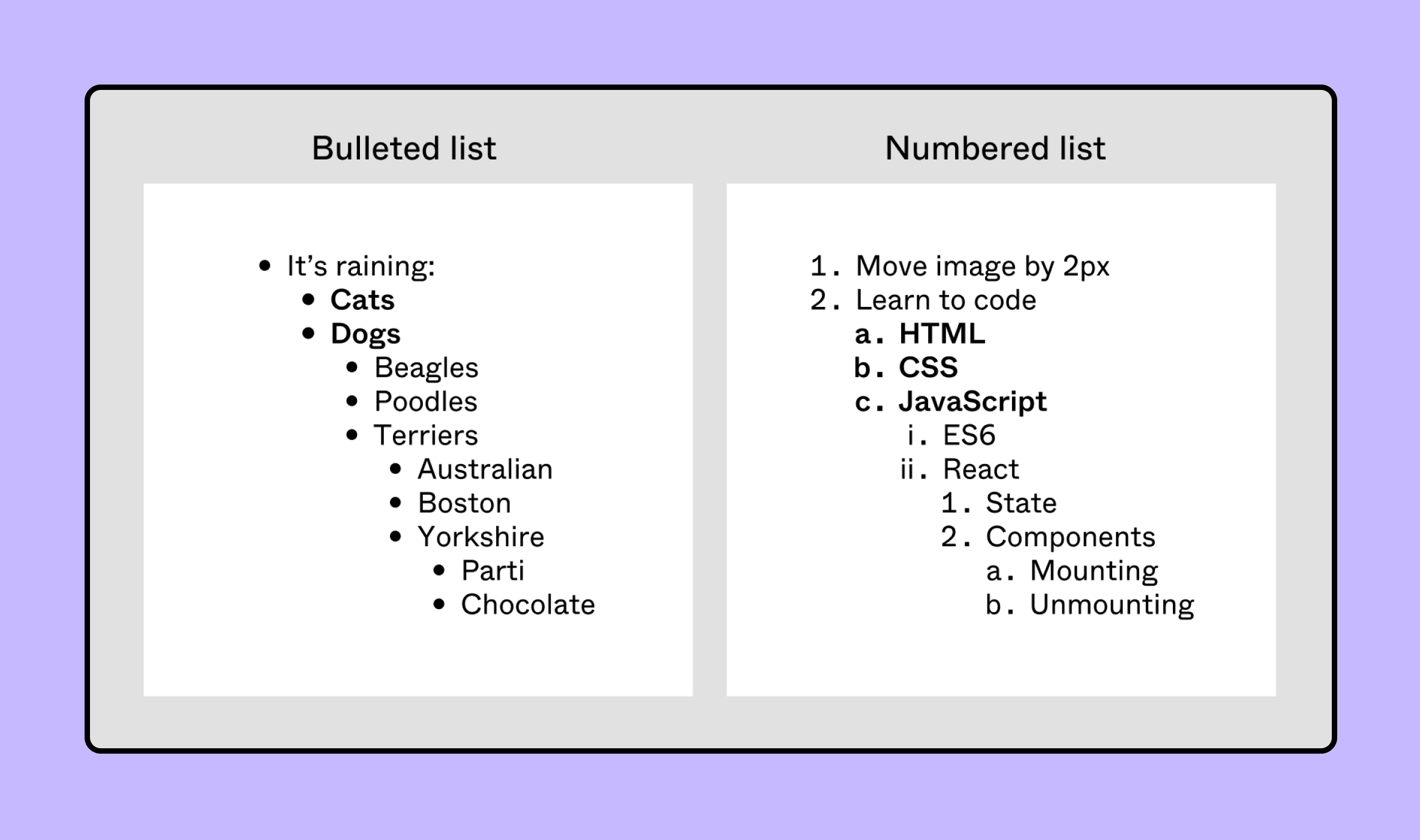
Give yourself time with this step. Often, people can’t set down all the information they know about a subject on the first pass. Write down what you can, in whatever order it comes out of you. Then – walk away. Leave your information alone for several hours, or even a couple days. When you come back, you might see some holes where you left out information. Write that down as well. Walk away again. The next time you come back, you might think of other information you want to pass along.
Once you’ve got most of the information on your subject dumped out in an outline or list, start trying to put it in a logical order. Simple, basic information should be presented first. Then, slightly more advanced information. Finally, the higher-level information where learning it relies on having learned basic and intermediate facts and skills.
Finally, you’ll want to go back to the most basic of information to be taught, and start breaking it down into short, digestible packets of learning. In other words, lessons. What facts, info, skills and techniques can be presented here? What kind of content is needed, and what’s the best media to use to impart it?
The Curse of Knowledge
Many humans have a cognitive bias when it comes to teaching a subject they know, or communicating with someone. We assume (often wrongly) that people have the same knowledge and experiences we ourselves possess. This bias can also be called The Curse of Expertise.
You need to actively put yourself in the position of your students, who know absolutely nothing about your subject area. Only by doing that can you make sure you impart all the information required to learn the subject, in the order the information needs to be learned.
Once again, after you’ve plotted out the information to be imparted in your lessons, leave your list for a while before coming back to it with fresh eyes. Ask yourself, “If I were new to this material, is this all the content I would need to learn this particular lesson?” Again, many of us may not get this complete on the 2nd, 3rd or even 4th try! Be patient with yourself, and be willing to admit that refining the information is an ongoing process.
Read part 1 here. Read part 3 here. Read part 4 here. Read part 5 here.
Teaching Online – Part 1
Lessons
The basis of nearly every online teaching system is the lesson. A lesson is basic instruction about a single subject. Some examples: not about all footwear in general, but about tying a shoelace; just the Battle of Waterloo, not the entire Napoleonic War; not “Cooking with eggs,” but “Introduction to the egg.”
The ideal first lesson should be self-contained. Future lessons might reference back to what the student learned in the previous lessons (ie, “Making an omelet” could reference info from “Introduction to the egg”), but should not assume knowledge not yet covered.
The information presented to the student is the content of the lesson.
Content
Content is simply information that teaches the student something. For online courses, this content can be presented in almost any media that can be provided digitally. It could be text (provided as a word processing document, a PDF, or even text on a picture); it could be audio, like a recording of an old radio broadcast; it could be video, like a clip from a news program or an educational skit produced by a professional company, or even a live Zoom webinar; it could be a graphic, like a photograph, or an informational graph representing collected data. A presentation prepared as slides in a program like PowerPoint can also be part or all of a lesson. A lesson can be made of one or more of these media. For instance, a slide presentation could be a combination of text, graphics, voiceover audio, video clips, and even incidental music.
Starting Simple
There’s a phrase I like to use when talking about most subjects: Simple is best. This is true for both students and educators. A student beginning the study of a subject should be presented with a simple lesson, and immediately rewarded for consuming the content. For instance, at the end of the lesson “Introduction to the egg,” you might ask the student “What’s the yellow part of the egg called?” When they correctly answer “the yolk,” you can do anything from having your lesson state, “That’s correct” to setting off digital fireworks and airhorns.
Your content should be simple as well. Present the information in at least one medium that’s easy for you to create. While you could set up an entire kitchen with multiple cameras, there’s no reason why you couldn’t present “Introduction to the egg” as text with a few pictures as illustrations. The written lesson is much faster, easier, and less expensive to produce.
Teaching Software
Many people considering providing online education get caught up in trying to decide the best platform to use. They begin the whole process by asking themselves and others, “Which software should I use?”
I understand the concern! I began my own exploration of teaching online with the same question. What will happen down the road when you’ve created tons of content, but the platform turns out to be crap?
I have a heretical answer: it doesn’t matter what software you use. Pick the one you can afford, and learn it. Then, start using it to present your first lesson to students.
When I say “afford,” I’m talking about cost and not price. Price is the dollar amount someone tells you to take out of your pocket. Cost could include dollars, but it often includes time and other non-monetary investments, like research (what are your peers and competitors using?) and testing.
There are platforms that will host your lessons, along with thousands of others, and provide you with the framework to assemble your lessons out of your media. There are others that force you – or allow you, depending on your point of view – to create your own website and host all the software and media yourself.
I started out paying for a hosted platform, but now own licenses for two educational platforms that I can use on sites I build and direct myself. Again, it doesn’t matter what software you use to present your educational system. What matters is that you and your students can understand how it works from either side, and that you can and do create content for lessons.
Read part 2 here. Read part 3 here. Read part 4 here. Read part 5 here.
Karate Website Marketing Copy
I was recently tasked with writing the marketing copy for a new karate website. This is appropriate in a number of ways: I’ve been involved with marketing for nearly 40 years, and I’ve been training and teaching traditional Okinawan goju-ryu karate for over 20 years.
Anyway, here’s the website:
Funnels via Instagram
As I’ve said before, a funnel is just the automated way of leading a prospect or customer through your sales process. Making it simple is best. I’ve talked about digital or online funnels before. There are some basic aspects or parts that make up funnels, and a given funnel may have some, many, most, or even all the parts built into it. Those parts might include:
- An advertisement, or some way to entice a lead to enter the funnel
- A headline
- A greeting
- A statement of the problem you solve
- The solution you provide
- Your offer, which may include –
- – the main offer
- – an upsell
- – a downsell
- – a cross-sell
- Collection of contact information
- Collection of payment
- A thank-you page
- A confirmation message
- One or more educational or relationship-building messages
A short & simple lead generation funnel might consist of a problem statement, the offer of a lead magnet, collection of contact information, and a thank-you/delivery message. It’s always best to “strike while the iron is hot,” as they say, and offer something for sale immediately after you collect their contact information, but we’ll go into that in a few minutes.
It’s now possible to create a funnel directly within the Direct Messaging stream of Instagram, using DM automation software. Traffic is often the single biggest problem and expense for those creating a funnel. Any Instagram account with 10,000 or more followers already has the potential for a steady stream of traffic.
DM automation tools (my marketing agency uses a tool called Chatmatic) allow you to automate conversations with prospects, based on them DMing an Instagram account. Chatmatic also lets you initiate a conversation with someone who interacts with a post or an Instagram Story that they’ve posted.
The conversation is the funnel – you don’t need complex pages, or to even take the prospect away from Instagram, where they’re comfortable. The DM automation tool makes it possible to offer the prospect choices (“Is your basement too wet, or too dry?”, “What size shirt do you wear? Small, Medium, Large, XL, XXL” etc.), collect contact information like email or mobile number, and even deliver a digital file or information by offering a button with an embedded URL.
Since the DM automation tool can collect contact information (name, email, mobile number, birth date, etc.), you can then move this information to an email list or similar contact database. Most importantly, you can use the funnel on Instagram to reach back out to your prospect within 24 hours and offer to sell them something that is related to the problem your funnel addresses. As an example, let’s say you sell household heating & cooling solutions, and your automated conversation was about problems with the prospect’s basement. Once you collect their contact info, you can offer them a PDF about basements, and why it’s important to keep them at a constant temperature and humidity level. Within Instagram’s 24-hour contact window, you can follow up with that prospect. If they’ve said their basement is too wet, you can offer to sell them a dehumidifier. If it’s too dry, you can offer them a humidifier. If they take either offer, you can then offer upsells (“Keep your new machine in top shape with our maintenance kit: normally $250, now only $198”) and downsells (“Don’t need the complete kit? Get just the brush and cleaning fluid for $49 plus S&H”) on the sales page on your website, or even from the Instagram conversation itself.
By moving the prospect’s contact info to a list, you can then continue to build a relationship with them, and send them marketing messages. Why is moving followers “off the algorithm and onto your list” important? Instagram’s current system will show your posts only to about 8% of your followers. An email message is likely to be seen by around 16% of your list, effectively doubling your contact ability. And SMS, or text messages, are opened within minutes by approximately 90% of the recipients!
If you’re serious about using Instagram to make sales, you simply must build a list, and then follow up with a sales message. Ideally, by SMS.






